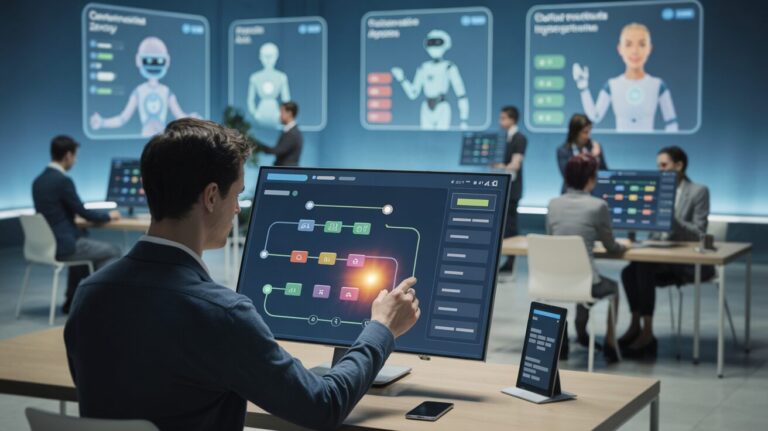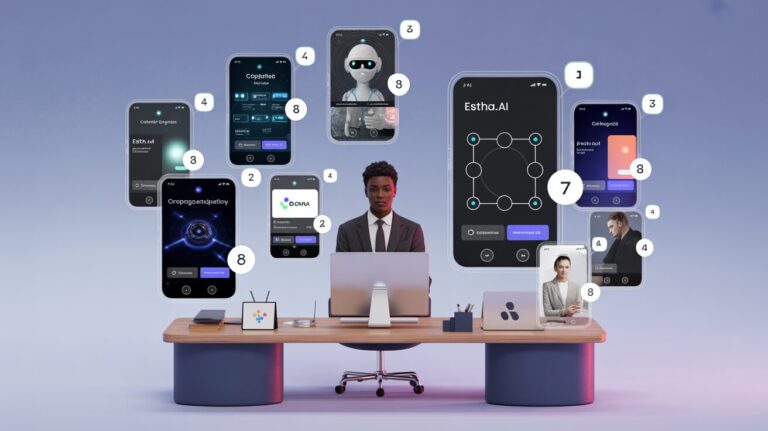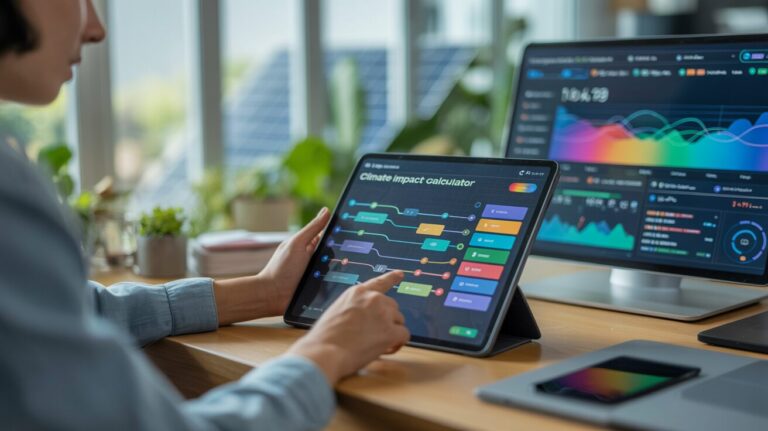Table Of Contents
- Understanding AI Vision for Manufacturing Quality Control
- Traditional Quality Control Challenges in Manufacturing
- Benefits of AI-Powered Vision Applications
- Building Your Custom Quality Control Vision App
- Implementing Your Vision App on the Production Floor
- Real-World Applications and Case Studies
- Future of No-Code AI in Manufacturing
- Conclusion
Quality control has always been the backbone of successful manufacturing operations. However, traditional inspection methods are often labor-intensive, inconsistent, and unable to keep pace with modern production speeds. The emergence of AI-powered vision technologies has created new possibilities for automated inspection systems—but until recently, implementing these solutions required specialized technical skills, significant development resources, and substantial investments.
Today, a revolutionary approach is changing this landscape: no-code AI vision applications. These customizable tools allow manufacturing professionals to create sophisticated visual inspection systems without writing a single line of code or having deep AI expertise. Whether you’re looking to detect microscopic defects in electronic components, ensure consistent product assembly, or verify packaging integrity, custom AI vision apps can transform your quality control processes while dramatically reducing costs and implementation time.
In this comprehensive guide, we’ll explore how manufacturing professionals can leverage no-code platforms to build powerful AI vision applications for quality control—enabling more accurate inspections, reducing waste, and ensuring consistent product quality. We’ll walk through practical implementation steps, explore real-world applications, and demonstrate how anyone can create these solutions in just minutes, not months.
No-Code AI Vision for Manufacturing Quality Control
Transform inspection processes without writing a single line of code
Why AI Vision Is Revolutionizing Quality Control
Defect detection accuracy with AI vision applications compared to 80% with human inspection
Reduction in quality-related costs when defects are caught early in production
4 Steps to Build Your No-Code AI Vision Application
Define Quality Parameters
Document specific defects, variations, and acceptable tolerance ranges
Collect & Prepare Visual Data
Gather representative images of both acceptable products and those with defects
Design App Interface
Create intuitive layouts with camera feeds, visual indicators, and analysis displays
Implement Real-Time Analysis
Configure automated actions like alerts, sorting mechanisms, and data recording
Real-World Impact Across Industries
Electronics
94% reduction in defect escape rates with 300% faster inspection speed
Automotive
78% fewer quality-related complaints by detecting subtle variations
Pharmaceutical
99.8% detection accuracy at twice the speed of previous methods
The Future of Quality Control
- Multi-sensory integration combining vision with thermal, acoustic, and vibration data
- Adaptive learning systems that continuously refine detection capabilities
- Predictive quality management identifying issues before they become problems
Transform Your Quality Control Today
Create custom AI vision applications in minutes without coding or specialized expertise.
Understanding AI Vision for Manufacturing Quality Control
AI vision for quality control combines computer vision technology with artificial intelligence to automatically detect, analyze, and flag deviations from quality standards in manufacturing processes. These systems use cameras and sensors to capture visual data, which AI algorithms then analyze to identify defects, inconsistencies, or other quality issues that might escape human inspection.
Traditional machine vision systems relied on rigid, rule-based programming that required extensive configuration for each specific inspection task. Modern AI-powered systems, however, use deep learning to recognize patterns and anomalies much like a human would—but with greater consistency, speed, and accuracy. These systems can detect subtle variations that might indicate potential quality issues, from color inconsistencies to microscopic structural defects.
What makes today’s no-code vision applications truly revolutionary is their accessibility. Manufacturing professionals with domain expertise—but no programming knowledge—can now create customized quality control systems tailored to their specific products and processes. This democratization of AI technology means quality control teams can implement sophisticated inspection solutions without waiting for IT departments or external vendors to develop them.
Traditional Quality Control Challenges in Manufacturing
Manufacturing quality control has historically faced significant challenges that impact both operational efficiency and product quality:
Human inspection, while valuable for certain applications, introduces inconsistency and fatigue. Studies show that human inspectors typically achieve 80% accuracy at best for visual inspection tasks, with performance declining significantly during long shifts. Manual inspection processes also struggle to keep pace with modern high-speed production lines, creating bottlenecks that slow overall throughput.
Traditional automated systems, meanwhile, often lack flexibility. They typically require complex programming for each specific inspection task and have limited ability to adapt to product variations or new quality requirements. When product designs change or new quality parameters need to be monitored, these systems frequently require extensive reconfiguration by specialized technicians.
The cost barrier presents another significant challenge. Implementing conventional machine vision systems has historically required substantial capital investment in specialized hardware, software development, and integration services. For small to medium-sized manufacturers, these costs often put advanced quality control automation out of reach, creating an uneven playing field in competitive markets.
Finally, the technical expertise gap has been a persistent obstacle. The shortage of AI and machine vision specialists means many manufacturers struggle to find and retain the talent needed to develop and maintain sophisticated quality control systems. When technical issues arise, production may be halted while waiting for specialized support.
Benefits of AI-Powered Vision Applications
The shift to AI-powered vision applications for quality control delivers multiple transformative benefits for manufacturers:
Perhaps most significantly, these systems dramatically improve detection accuracy. AI vision applications can identify defects with over 99% accuracy in many applications, far exceeding human inspection capabilities. The systems can detect microscopic defects invisible to the human eye and maintain consistent performance 24/7 without fatigue or attention lapses.
The financial impact is equally compelling. By identifying defects early in the production process, manufacturers can avoid the costs of processing and shipping defective products. Studies show that finding defects at the earliest possible stage can reduce quality-related costs by up to 90% compared to discovering them after products reach customers. Beyond direct cost savings, improved quality control enhances brand reputation and customer satisfaction, leading to stronger market position and repeat business.
From an operational perspective, AI vision applications enable real-time monitoring and analytics. Manufacturing teams gain immediate insights into quality trends, allowing them to identify and address process issues before they result in significant waste. This continuous feedback loop supports a culture of continuous improvement and data-driven decision-making across production operations.
Perhaps most revolutionary is the adaptability these systems offer. Unlike traditional machine vision, AI-powered applications can learn and adapt to new products and quality requirements with minimal reconfiguration. This flexibility is particularly valuable in industries with frequent product changes or customization requirements.
Building Your Custom Quality Control Vision App
Creating a custom quality control vision application without coding expertise is now possible through no-code AI platforms like Estha. The process follows four key steps that manufacturing professionals can implement using their domain knowledge and quality control expertise.
Step 1: Defining Your Quality Control Parameters
The foundation of any effective vision application is clearly defined quality control parameters. Begin by documenting the specific defects, variations, or quality issues your system needs to detect. This might include surface imperfections, dimensional inconsistencies, color variations, assembly errors, or packaging problems.
For each parameter, define the acceptable tolerance ranges and classification categories (e.g., minor defect, major defect, critical defect). Consider both visible characteristics and contextual information that might affect quality judgments. The more precisely you can define these parameters, the more effective your vision app will be at distinguishing between acceptable variations and actual quality issues.
Work closely with production staff, quality engineers, and customer service teams to ensure all relevant quality concerns are addressed in your parameters. Their front-line experience often reveals subtle quality issues that might not be documented in formal specifications but are important to customers.
Step 2: Collecting and Preparing Visual Data
AI vision applications learn through examples, making your training data crucial to system performance. Collect a comprehensive set of product images that represent both acceptable products and those with various types of defects or quality issues. The more diverse and representative your image collection, the more robust your quality control system will be.
When capturing images, ensure consistent lighting and camera positioning to minimize variables that aren’t related to actual quality differences. Consider capturing products from multiple angles if defects might appear in different orientations. For some applications, you may need specialized lighting to highlight certain types of defects, such as UV light for detecting surface contamination or backlighting for finding cracks.
Using a no-code platform like Estha, you can organize and label these images through a simple interface, creating the foundation for your AI’s learning process. The platform handles the complex work of processing these images and developing the underlying AI models without requiring you to understand the technical details.
Step 3: Designing Your Vision App Interface
The interface design determines how operators will interact with your vision application. A well-designed interface enhances usability and ensures that quality information is presented clearly and actionably.
Using Estha’s drag-drop-link interface, manufacturing professionals can create customized application layouts without programming. Consider the workflow of your quality control process when designing the interface. Include elements such as:
– A camera feed or image upload area for capturing product images
– Clear visual indicators for pass/fail results
– Detailed analysis displays that highlight detected defects
– Historical data views for tracking quality trends
– Action buttons for common tasks like saving reports or adjusting sensitivity
The interface should be intuitive enough for production staff to use with minimal training while providing enough detail for quality engineers to analyze specific issues. Consider the environment where the application will be used—factory floor interfaces may need larger buttons and simpler layouts than those used in laboratory settings.
Step 4: Implementing Real-Time Analysis
The power of AI vision applications comes from their ability to provide immediate analysis as products move through the production process. Configure your application to capture images at the appropriate inspection points and process them in real-time.
Set up appropriate actions based on the analysis results. These might include:
– Triggering alerts for operators when defects are detected
– Activating sorting mechanisms to remove defective products
– Recording quality data in production databases
– Generating reports for quality management review
With Estha‘s no-code platform, these automation workflows can be configured through simple visual interfaces rather than complex programming. The platform handles the technical aspects of integrating with cameras, processing images through AI models, and connecting with other production systems.
Implementing Your Vision App on the Production Floor
Successful implementation of your vision application requires careful planning and integration with existing production processes. Begin with a pilot implementation in one production area to validate the system’s performance and refine its configuration before full-scale deployment.
Consider the physical setup requirements. Position cameras and lighting to capture consistent, clear images of products. In some environments, you may need environmental enclosures to protect equipment from dust, moisture, or temperature fluctuations. Ensure reliable connectivity for real-time data processing, whether through local networks or cloud systems with appropriate security measures.
Training production staff is equally important. Develop clear procedures for using the vision application and responding to its findings. Help operators understand both how to use the system and why it improves quality outcomes. Create reference materials that explain common defect types and appropriate responses.
Establish a continuous improvement process for your vision application. Regularly review its performance and refine its parameters based on production data. One significant advantage of AI-based systems is their ability to learn from new examples over time. As you identify edge cases or new defect types, add them to your training data to improve detection accuracy.
Real-World Applications and Case Studies
AI vision applications are transforming quality control across diverse manufacturing sectors:
In electronics manufacturing, vision applications inspect PCB assemblies for solder defects, component placement errors, and surface imperfections. One manufacturer implemented a no-code vision application that reduced defect escape rates by 94% while increasing inspection speed by 300% compared to manual methods. The system paid for itself within three months through reduced rework costs and customer returns.
Automotive component manufacturers use vision applications to verify complex assemblies and surface finishes. A tier-one supplier implemented an AI vision system for inspecting interior trim components, reducing quality-related customer complaints by 78% in the first six months. The system detected subtle texture and color variations that human inspectors frequently missed.
In pharmaceutical production, vision applications verify product integrity, label accuracy, and packaging quality. One company deployed a vision system that inspects blister packs for missing tablets, seal integrity issues, and printing defects. The system achieved 99.8% detection accuracy while operating at twice the speed of previous inspection methods.
Food and beverage manufacturers use vision applications to detect contamination, verify fill levels, and ensure consistent appearance. A bakery implemented a vision system that inspects finished products for size, shape, color, and surface defects. The system identified subtle variations in baking consistency that helped the company optimize their oven settings, simultaneously improving quality and reducing energy costs.
Future of No-Code AI in Manufacturing
The evolution of no-code AI vision applications is just beginning, with several emerging trends poised to further transform manufacturing quality control:
Multi-sensory integration represents the next frontier, combining visual inspection with other data sources like thermal imaging, acoustic analysis, and vibration monitoring. This integration enables more comprehensive quality assessment by detecting issues that might not be visible in standard images. Platforms like Estha are developing capabilities to incorporate these diverse data streams into unified quality applications without requiring programming expertise.
Adaptive learning systems represent another important advance. These systems continuously refine their detection capabilities based on production feedback, becoming more accurate over time without manual retraining. As they encounter new examples of both acceptable products and defects, they automatically update their understanding of quality parameters.
Perhaps most significantly, we’re seeing a shift toward predictive quality management. By analyzing patterns in quality data, AI systems can identify early indicators of potential quality issues before they become serious problems. This predictive capability allows manufacturers to address process issues proactively, reducing scrap rates and preventing costly quality incidents.
For manufacturing professionals, the democratization of AI technology through no-code platforms means quality control capabilities once available only to large enterprises with specialized technical teams are now accessible to operations of all sizes. This accessibility is creating a more level playing field in manufacturing competitiveness while elevating quality standards across industries.
Conclusion
The revolution in manufacturing quality control is no longer limited by technical barriers or prohibitive costs. No-code AI vision applications have transformed what’s possible, enabling manufacturing professionals to implement sophisticated quality inspection systems without specialized programming knowledge or extensive capital investment.
By leveraging platforms like Estha, quality teams can create customized vision applications tailored to their specific products and processes in just minutes. These applications combine the consistency and speed of automation with the intelligence and adaptability of AI learning systems—delivering inspection capabilities that often exceed both traditional automation and human inspection.
The impact extends beyond simply detecting defects. Real-time quality insights drive process improvements, reduce waste, and create competitive advantages through superior product quality. As manufacturing continues to evolve toward smarter, more adaptive production systems, no-code AI vision applications will play an increasingly central role in quality management strategies.
For manufacturing professionals looking to enhance their quality control capabilities, the time to explore these technologies is now. The barrier to entry has never been lower, and the potential benefits—in terms of reduced costs, improved quality, and enhanced competitiveness—have never been greater.
Ready to Transform Your Manufacturing Quality Control?
Create your own custom AI vision application in just minutes—no coding required. Experience how Estha’s intuitive platform can help you build powerful quality control solutions tailored to your specific manufacturing processes.



